Jimmy Page: “The whole idea of the Dragon Tele was to bring a new life into it - to mix my identity into the actual guitar”
The guitar legend tells the story of his fabled Telecaster and Led Zeppelin I
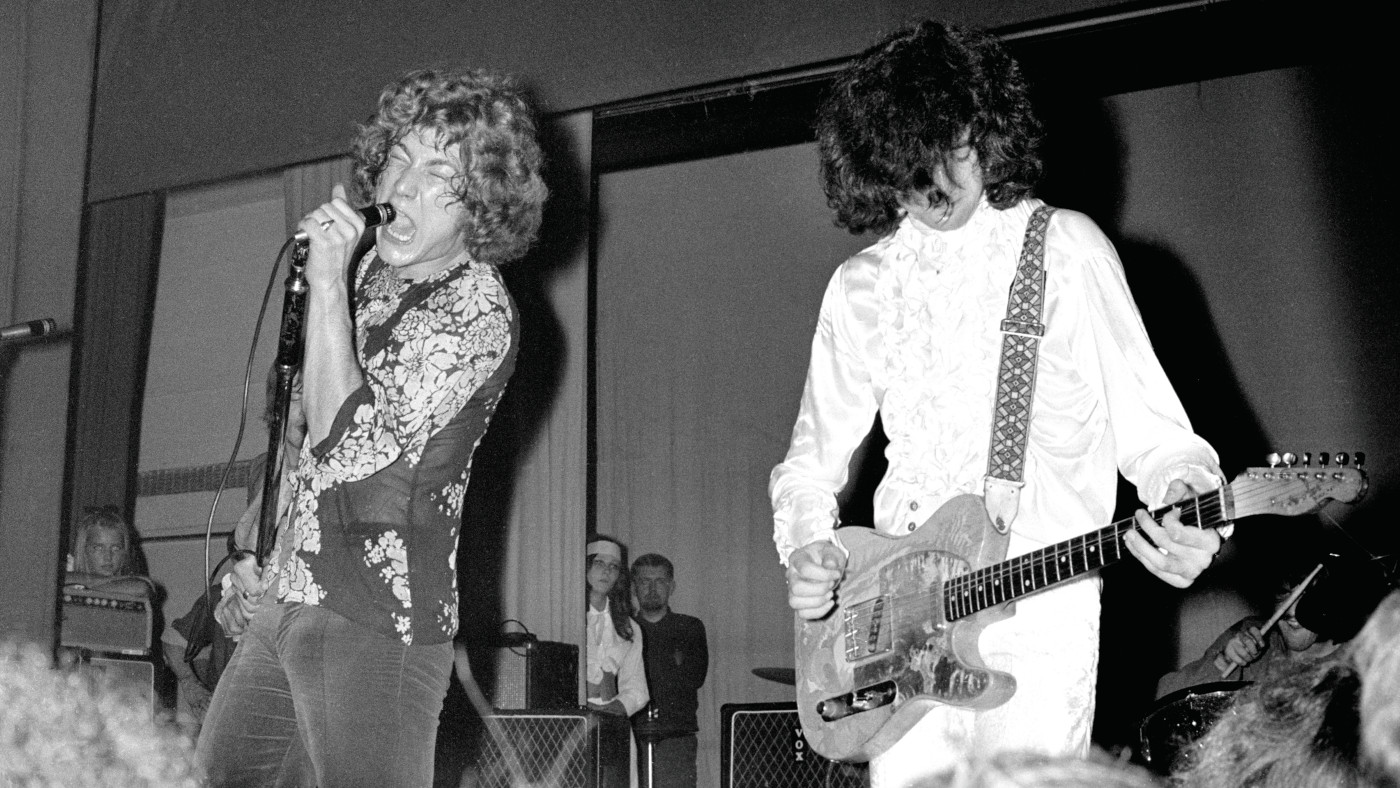
Jimmy Page is as busy as ever. When we catch up with him, he’s bright-eyed and practically bouncing with excitement.
He’s just loaned some of his most prized electric and acoustic guitars to an exhibition at the Metropolitan Museum Of Art in New York City (including his full stage rig from Led Zeppelin’s 1977 tour), he’s contributed new interviews to a forthcoming documentary about the band helmed by American Epic director Bernard MacMahon, and, he says, he’s been working on new music.
But his latest project - which the guitar legend says has been all-consuming over the past several years - is a unique collaboration with US guitar manufacturer Fender: a soup-to-nuts recreation of his fabled 1959 ‘Dragon’ Telecaster, gifted to him by his longtime friend Jeff Beck upon joining The Yardbirds in 1966 and used almost exclusively in crafting the genre-defining sounds captured on Led Zeppelin’s debut album, now more than 50 years ago.
Lonnie Donegan was the portal that gave many of the bands that started in the 60s access to the guitar
“I wanted a Tele because of James Burton,” Beck recalled of the guitar. “They had such a tight sound but very warm, too. I got that guitar from John Owen for a purple Strat and somehow it became Jimmy’s. When I left The Yardbirds - in a huff, mind you - I left the guitar behind.
“Jimmy became the lead guitarist and had to play all my parts, so he started using it, and I guess that’s how it became his. Then he plastered it with psychedelic paint and that was that.”
Page, too, mentions Burton - and the rockabilly explosion that was happening all around him during his formative years - as a key to the draw of the Telecaster.
“The first Fender that I saw was on an album in the 50s, The ‘Chirping’ Crickets,” Page recalls, citing Buddy Holly’s 1957 album as a formative influence. “I said, ‘My God, what is that?’ Then I saw one in a guitar showroom - one of the smaller ones - in Charing Cross Road. They had one in the window.
Get the MusicRadar Newsletter
Want all the hottest music and gear news, reviews, deals, features and more, direct to your inbox? Sign up here.
“But I don’t even know just whether I could even dream at that point that I’d ever be able to play in the region of Scotty Moore or James Burton. I was part of a whole generation of people who were seduced by the sounds of rock ’n’ roll through their radios. We heard this wild music - whether it was Little Richard or Elvis Presley, or even big band stuff, but certainly [a] more rockabilly side of it.
“It gets to the point where I hear the Presley stuff - the Sun singles where he’s playing incredible rhythm guitar - and I could appreciate that there was acoustic guitar going on,” Page continues, describing his early influences.
“And I heard this guy called Lonnie Donegan, who was doing Leadbelly and Woody Guthrie type music, but he had a sort of beat to it - and that was skiffle. He would be on a Saturday evening programme for young people, and was the only one really worth watching.
“He really captured the imagination of the youth. Everybody seemed to really be enamoured by his performances because he was so passionate with the songs that he was doing like Rock Island Line and Cumberland Gap The next day at school, people would say, ‘You see this guy Lonnie Donegan on the television?’ The whole classroom would be buzzing and the whole school would be buzzing about this guy Lonnie Donegan, who was considerably older than us, but not as old as our parents.
“I can say quite safely that he was the portal. It was a door that gave many of the bands that started in the 60s access to the guitar.”
The Yardbird Years
Hardly thrilled with his new-found obsession for guitar music, Page’s parents at least tolerated it, he tells us.
“I had to sort of deal with my dad as things went on with the guitar playing,” Page says with a laugh. “He said, ‘I won’t get in the way of that, you know, just as long as you keep up your academic studies.’”
Soon Page met Beck - whose sister knew Page as another “weird kid with a guitar” - and the rest, as they say, is history.
“When I left school, I left school to join a group. But I started to get a bit disillusioned with it all and I went to art college. The curious thing is that while I’m in art college, I’m still playing in a rhythm and blues club - which was basically a blues club, called the Marquee Club, in London - in the interval band. So I didn’t stop playing and I got headhunted from there to play on a record. And I played on a No 1!”
Jeff Beck knocks on the door and he said, ‘Here, this is yours,’ and he gave me the Telecaster
As for how he acquired the infamous Telecaster, Page recalls it a bit differently than his friend Beck.
“The manager of The Yardbirds had actually asked me to join when Eric [Clapton] left,” Page remembers. “I said, ‘Well, I know somebody who’d be really good for this and it’s Jeff Beck.’ So, he went in there.
“I gave him the fuzzbox I was using in the studio when he joined, and, of course, he went in there and did some amazing work. I’m still living with my parents at the time in Epsom. And I hear this sort of car roar up and I thought, ‘What’s that?’
“I didn’t know it was a car, I just heard this thing roaring up. I looked out the window and I saw that it was a blue Corvette Stingray outside. It’s Jeff. And Jeff’s coming out and he’s holding this guitar. He knocks on the door and he said, ‘Here, this is yours,’ and he gave me the Telecaster that he’d been using, and said, ‘This is yours for getting me in The Yardbirds.’ Obviously, I was really moved with that.”
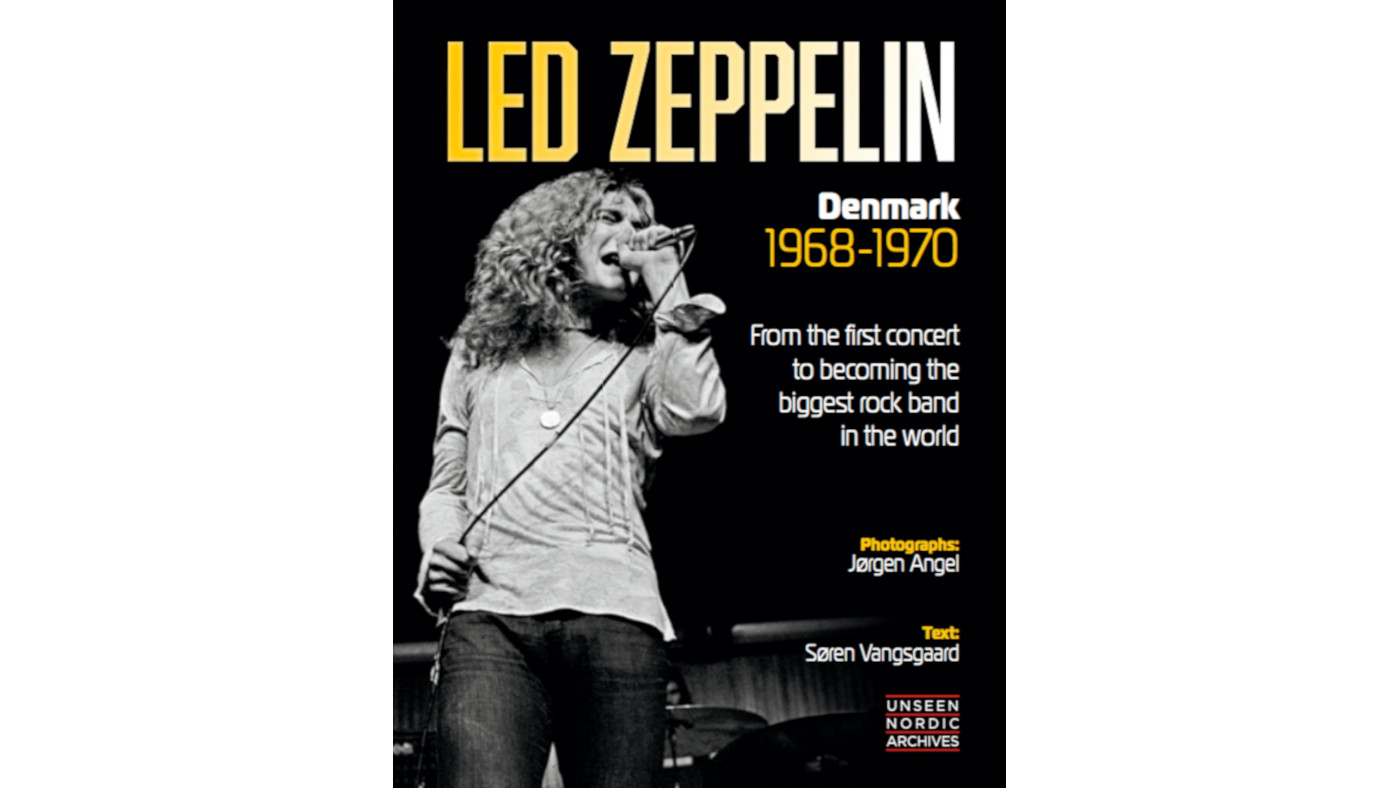
A new book, Led Zeppelin: Denmark 1968-1970, documents Led Zep’s early years, including their first ever gig as The New Yardbirds in Copenhagen in 1968. Teenage photographer Jørgen Angel was there at the very beginning of the band’s live journey and ended up befriending them, capturing them on and off stage whenever they passed through his home city in Denmark. There’s plenty of unseen photography of their landmark first two years here, with an accompanying narrative from music historian Søren Vangsgaard. Led Zeppelin: Denmark 1968-70, by Jorgen Angel & Søren Vangsgaard, is out now, £20, published by Flying V Books
In many ways, the guitar Jeff gifted him was unremarkable. Like so many Teles of the era, it featured an ash body, as well as two stock single-coil pickups, a three-way selector switch, volume and tone controls, and chrome bridge, control panel and knobs, plus a maple bolt-on neck and a ‘spaghetti’ Fender logo decal on the headstock, with nickel machineheads and a rosewood fingerboard with dot inlays across a 25.5-inch scale.
Not long after this - in the dressing room following a university May ball performance by The Yardbirds that Page says was nothing short of “punk” - bassist Paul Samwell-Smith quit the band. Page, who says he was simply there to congratulate his friends on a red-hot performance, was deputised, using the bass Samwell-Smith had left behind at a Marquee Club gig just a few days later. The mercurial Beck left soon after, leaving Page as the band’s lead guitarist.
Even though Jeff had given me the guitar, I still felt that I’d like to make some additions to it and customise it
“I started playing the Telecaster in that role,” Page recalls of the infamous guitar, which was, at the time, undecorated in its factory White Blonde finish. “I used the Telecaster that he’d given me, because, the way I saw it, all of the work that Jeff had done during the time that he was with The Yardbirds was on the Telecaster.”
In February 1967, Page says he added eight circular mirrors to the body.
“Bit by bit I tried various ideas on it to make it feel like my own instrument,” Page tell us.
“I started putting mirrors on it, so that it would be quite interesting in the light when I was playing it during concerts, and I could use it in an optical way with the lights to shine the mirrors on people while I was playing. In the 60s, mirrors were making their way into that whole 60s style.
“I don’t want to call it ‘Swinging 60s’, because some of that was quite pedantic and ploddy, but you’d see mirrors appearing in fashion, applied especially in women’s clothes, on jackets and skirts. And you’d also see mirrors appearing in artwork and in displays and things.
“But, of course, the thing about a mirror is that it’s a reflective surface and I could buy mirrors that were adhesive and put them onto the guitar. So even though Jeff had given me the guitar, I still felt that I’d like to make some additions to it and customise it, even something that I could take off if I wasn’t that keen on it.
“So I got, in all, about seven or eight mirrors that I put on the guitar, just in some sort of order, and they didn’t get removed until such point as I decided to strip it down and then paint it. That was the theory behind putting them on. But it was this whole thing of the reflective surfaces, that I could actually reflect the light over, onto other things, and onto good-looking young women and things like that. No, but quite seriously, it was something that then became quite kinetic as well.”
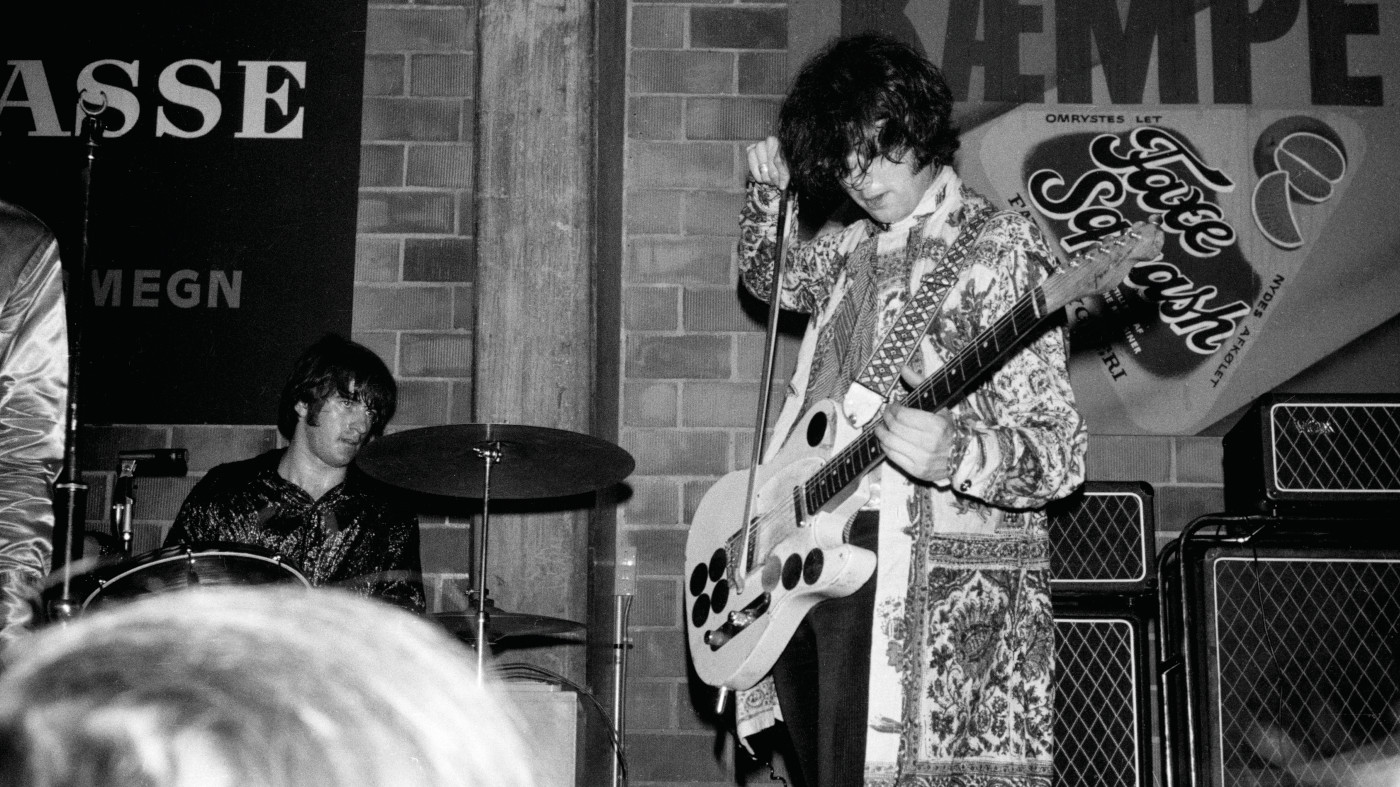
Enter the dragon
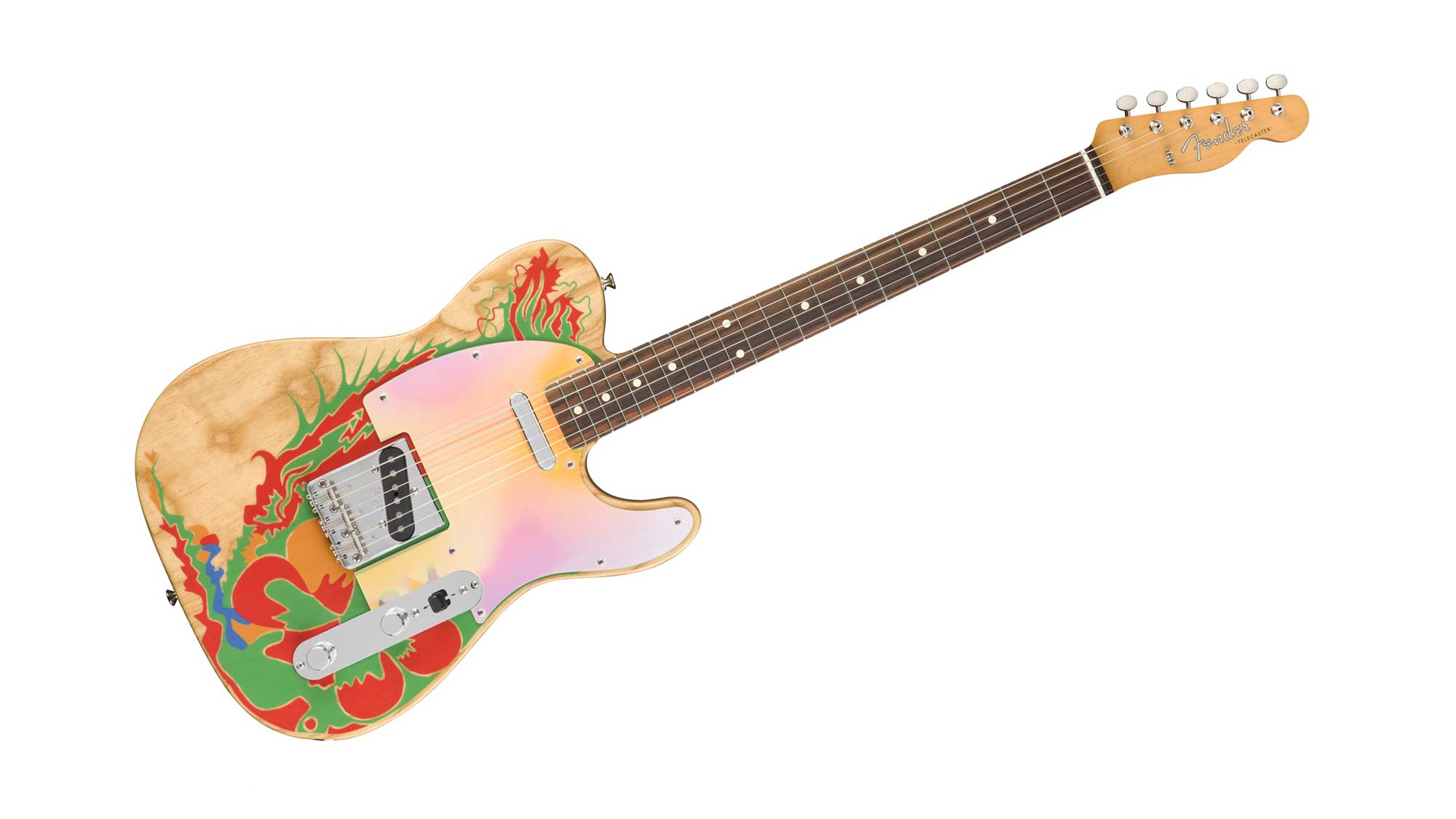
The guitar became Page’s main axe during his late-period Yardbirds days - the first time the legend experimented with playing it with a violin bow on early live workouts of Dazed And Confused - and he took it with him when he, like Beck, left to find his way as an artist in his own right.
“The year 1968 is when The Yardbirds decide that they want to fold,” says Page. “Curiously enough, I was still trying to keep them together, because I had ideas of what I thought would be good for us to do, to come away from the pop singles that we were being asked to make and just really do something that was a bit more cerebral and more reflective of how we were actually playing live. But they decide they wanted to change the name and everything and go off.
I had the idea that I’d wanted to actually have a complete consecration of it and strip it and paint it
“So it got to the point where I made a decision that I’m going to start my own band, because I’d done all the underground circuit over in the States, and I’d seen the advent and the birth of FM underground radio, which was stereo, and I could see what way it ought to go at that point. I knew what way I was going to take it.”
As Beck noted, Page then truly made the guitar his own. It was in mid-1967 that he removed the adhesive mirrors and completely stripped and repainted the instrument himself, this time hand-painting a mystical dragon on the guitar. He also replaced the stock white pickguard with a transparent acrylic version, adding light- diffracting foil underneath.
“I got to the point where I wanted to consecrate this guitar and really make it my own,” Page remembers of the evening he customised his Telecaster.
“I had the idea that I’d wanted to actually have a complete consecration of it and strip it and paint it. So I had it stripped. Do I want to actually say it’s defracturing and grating, so everyone runs off and uses it? Anyway, then I painted it. I wanted to use something that was going to make psychedelic patterns in it. And it all came together, and it was done in an evening.
“But when I started to go about painting the guitar, I wanted to paint it in colour opposites to begin with. When you do colour opposites, they’ll flash when they’re close to each other. That was the overall idea of approaching it, and I wanted to use poster paint, which was used in the production of those psychedelic posters.
“So the whole of the dragon artwork, I don’t do a pre-run of it. I’ve got the paints and they’re exactly what sort of paints I wanted to use, because I’ve already bought them, and I just sort of do it.
“As I’m doing it, I get more ambitious with it. I’ve got pretty good control over my hand, so I tried something which is a bit more ambitious here, a bit more ambitious there. Because the whole idea of it was to bring a new life into it - to mix my identity into it, into the actual guitar, which was the reflection of how I felt about where I was at that point in time. I wanted to consecrate it almost like a magical implement. And that’s exactly how it was.
“So it becomes quite a psychedelic guitar - and that is just absolutely what the idea of it was. It’s absolutely freehand. I looked at the guitar and then started to work on it. I didn’t draw it out and paint it.
“It was just an inspired evening. I already had the Perspex, for the scratchplate, and the material I was going to put underneath that, so I was thinking ahead on it. I’d gotten paints and I had my brushes, because I’d been to art college. That night the whole thing was assembled and I went, ‘Yes. This is it.’ It becomes like an Excalibur guitar.”
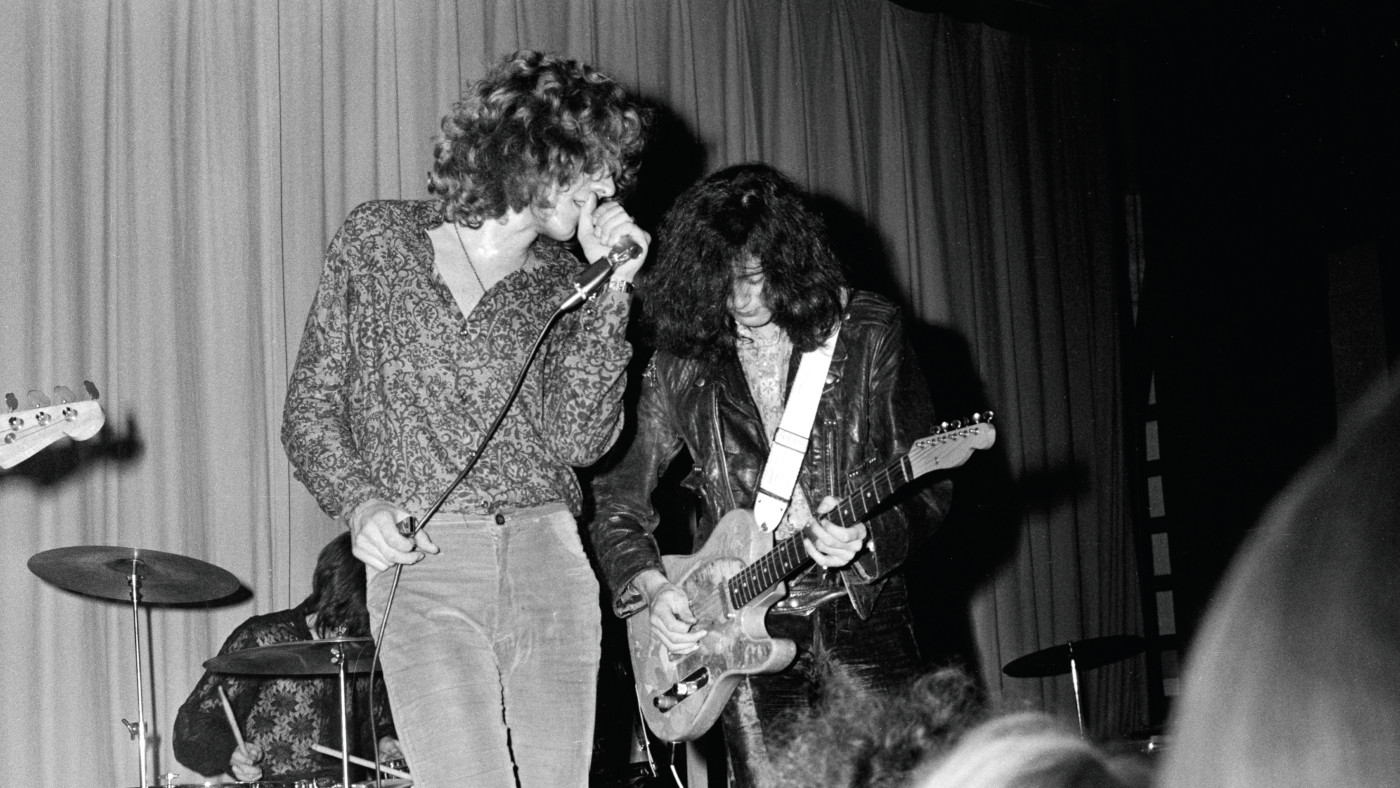
Take a bow
Remarkably, Page says the guitarists he came across when he first began using the guitar live barely made mention of its remarkable transformation.
“I think they thought it was cool, but I didn’t really need any feedback on it,” he says with a laugh. “The thing about the guitar, though, is that it has peculiarities about it. The neck - the depth of the neck - is very unusual. I haven’t necessarily got very large hands, and it felt very comfortable to me.”
The way that I saw Dazed And Confused was very much like a classical piece that would be in movements
When Led Zeppelin was formed in October 1968, the ‘Dragon’ Telecaster became Page’s go-to instrument and he played it on Led Zeppelin’s debut album and on stage after the album’s release. By that time, Page had perfected using a violin bow to create an eerie piercing effect. But the origin of that unique technique is still fresh in his mind.
“When I was a studio musician, people in the rhythm section were looked down on by the ones who played the violins, who’d done years of training on their bow technique, and who saw us as people who just came in and made a bit of a noise,” Page remembers.
“But there was a really cool guy who came up to me one day - and normally those guys didn’t really speak to us - and said, ‘Have you ever tried to play the guitar with a bow?’ And I said, ‘No, it probably won’t work.’ And he said, ‘Give it a go.’ So he gives me his bow and I started playing chords with it. He said, ‘Well, look, you can do it.’
“I went and bought some bows, you know, and I was working on it. I didn’t really do too much of it as a studio musician, because I didn’t want to be suddenly trying to do that. It was too much for them to take onboard! It was hard enough them taking on a distortion box that gave you the ultimate sustain and all of that. But it was something that I’d worked on at home.
“And by the time I got into The Yardbirds, and it was Jeff and myself, I remember I’d be doing a bow section, because they were a very avant garde band, so I didn’t think that was out of character at all.
“Later, the way that I saw Dazed And Confused was very much like a classical piece that would be in movements. Consequently, you’ve got the initial opening of it and then there’s the verse, and then it sort of moves into another gear, and you’ve got the whole bow section.
“I’d heard some music by a composer called [krzysztof ] Penderecki, an ode to the victims of Hiroshima. So this was something that I wanted to employ in Dazed And Confused, and I put that together with my attempt at playing the bow on the guitar and I tried to emulate that sort of texture, which is, along with the melodic aspect, really, really scary.”
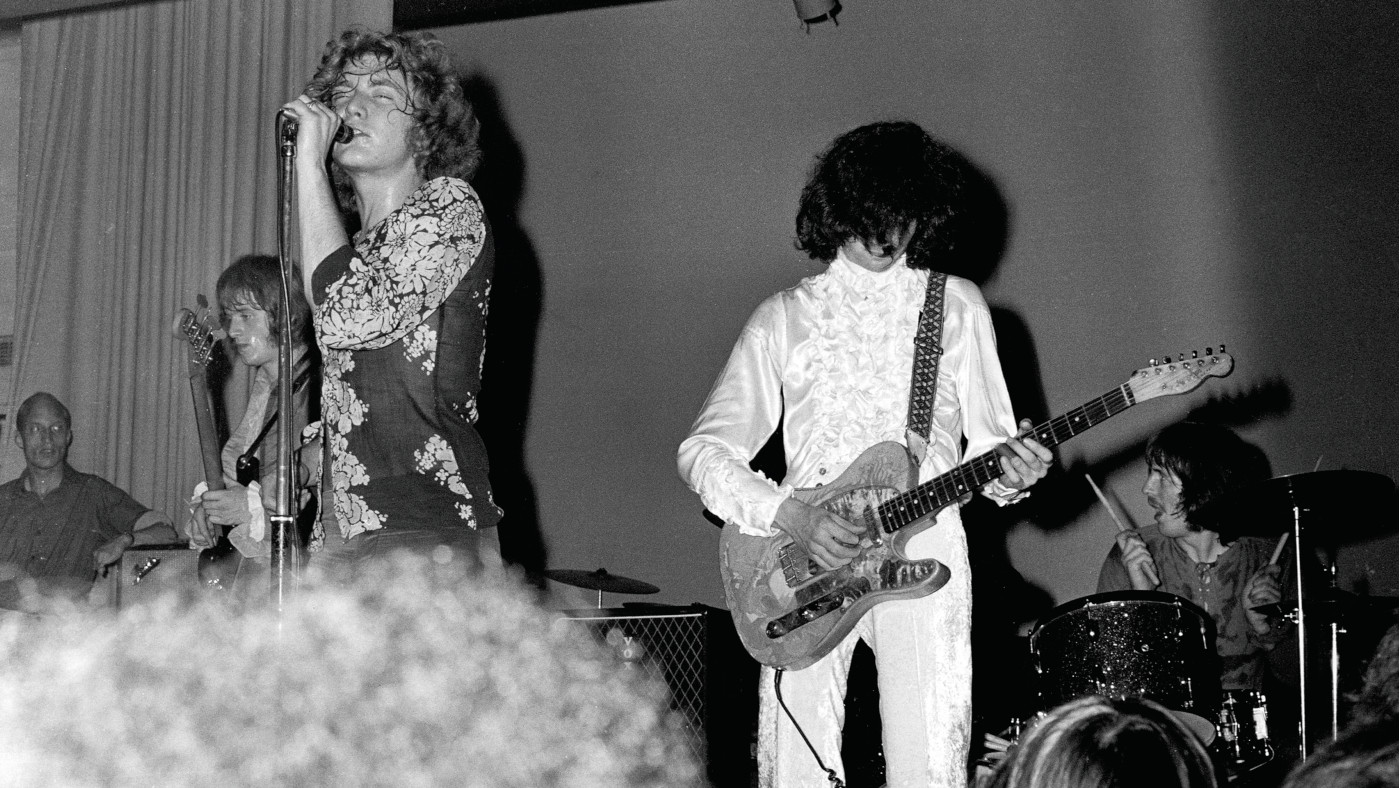
From magic to mishap
Page recalls Led Zeppelin’s first album as a lightning flash experience - “the whole album was done in 30 hours, so that’s pretty mind-boggling” - and his trusty Telecaster was the star of the show.
“The Telecaster was employed all the way through that album,” Page said. “It’s just a small little amp that I’m using, with a 12-inch speaker, and an overdrive box, and a wah-wah pedal at times. But it just goes to show the versatility of the Telecaster and what could be achieved with the minimal amount of equipment.
“By the time I’m doing Led Zeppelin I, there’s a whole landscape of guitarists that I’ve listened to, whether it was sort of blues or rockabilly, or a little bit of jazz or flamenco or classical, or whether it’s orchestras - I wanted to have something that had the full breadth and depth of orchestras, through guitar music.
I wanted to show the guitar’s total versatility on that album with that magical Telecaster
“I wanted all of it on that first album. I wanted to do everything. I was going to throw everything I could do at that, because there was a great focus on guitar albums around that point, but I wanted to show [the guitar’s] total versatility on that [album] with that magical Telecaster.”
Page says he left the guitar behind when Zeppelin hit the road in 1969. In his absence, the guitar was stripped and repainted by a well-meaning friend, all but ruining it.
“In 1969, I go on tour and I leave my Telecaster behind with somebody who made ceramics and was also a bit of an artist,” Page begins, clearly pained by the memory.
“He was going to look after my house, because I’d had a break-in there and I’d had a guitar stolen, a Coral sitar, during one of the tours. So I was really nervous about leaving the house where we did all the rehearsals with Led Zeppelin and everything, and word had got around, so I thought, ‘I can’t leave the house empty. I’ll leave somebody to look after the house.’
“So I went off and did the tour, and the tour was absolutely amazing, as you can imagine. All of the Led Zeppelin tours were just getting more and more and more immense. The popularity of the band was just at such incredible levels. Each year that we went back, it just got bigger and bigger and bigger.
“So I came back and thought, ‘Oh, I’m so glad to be home,’ because I really enjoyed my home. My friend said, ‘I’ve got a present for you.’ I said, ‘Oh, what’s that?’ I figured it was going to be a bit of ceramics. He said, ‘A guitar!’ I looked at the guitar and I didn’t for one moment think it was mine.
“It was a Telecaster, but it had been painted with all these modulating lines, with very earthy colours, all over it. I said, ‘Yeah, where’s my guitar?’ He said, ‘Oh, no - that’s it. That’s my present. I repainted your guitar for you.’ I didn’t open the case. I didn’t wanna see it. Now, I would probably smash the guitar over his head, but as it was I was still so vibed out from the tour that the whole thing didn’t really fully connect. And, anyway, I was using a Les Paul at the time.”
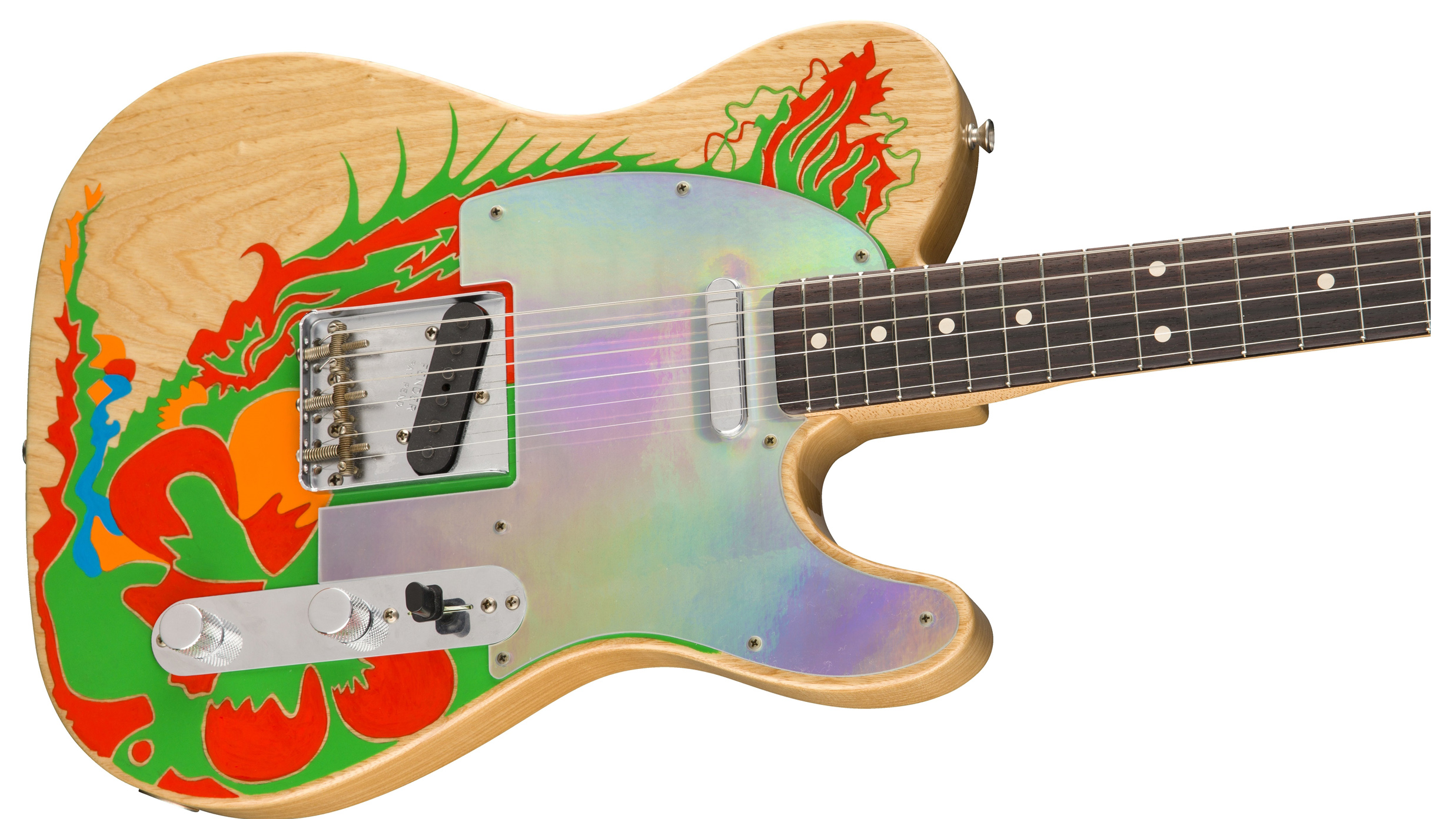
Recreation
Page stripped the guitar down again, but ended up abandoning it, using the neck on a B-Bender Tele during his years with The Firm. And so the Dragon laid dormant. Until 2018, that is.
“I came to the point where I thought the artwork should be recreated,” Page recalls, smiling.
“I just wanted to put the guitar back as it was, to give it some TLC and bring it back to life and use it again. So I went through the process of going through various photographs, because I had done a book and there were lots of black-and-white photographs of the guitar where you could see the grain of it, but I was very keen to make a point of the fact that this guitar was painted.
“A graphic artist had done some overlay painting, or colouring, on the black-and-white photographs, because I wanted the continuity in the book to show the fact that this was what it was, so I got in touch with him and said that I really wanted to recreate the guitar and asked if could he help do that, because he’d already done the colouring in the book.
I opened up the thing, and I thought, ‘Oh my goodness gracious, they’ve really got it 110 per cent right.’
“Then we started researching it, getting all the colour photographs, and it was really interesting, because the guitar started playing tricks on me. In all of the colour illustrations that we managed to acquire, the colours changed in each photo, because there were lights going on and all the rest. It was really interesting.
“But, of course, I remembered the way it was originally approached, with the colour opposites, and what the colours were, so I could really get it right. We agreed on the outline of what the thing was going to be and then it comes down to a situation of painting by numbers, so that you can get the thing exactly right.
“Because I wanted to recreate the original guitar, I thought it would be really interesting to see if Fender would be interested to do it, because of the heritage of this guitar.
“Somebody had suggested to me doing an edition of it, and said I could just do it without them. But I said, ‘I can’t do it without Fender. It’s a Fender guitar!’ So we had our prototype in London and we sent the prototype over to the Custom Shop in California. I asked them to send back the version they had done.
“It arrived, and I opened up the thing, and I thought, ‘Oh my goodness gracious, they’ve really got it 110 per cent right. Or 150 per cent right. It’s so absolutely as it is, as it should be, and as it was.’ I thought, ‘Well, I’ve got our prototype here.’ Because that prototype was actually the body of the original guitar. So that was great. And, of course, now we’re here.”
The results are the Limited Edition Jimmy Page Telecaster Set, produced by Fender’s Custom Shop and veteran Master Builder Paul Waller. The 50 sets produced are exact recreations of Page’s original ‘Mirror’ model and later ‘Dragon’ version and are now available to purchase from local dealers who are selling them to customers - together as a set, or separately for $25,000/£23,259 each.
They will include personal touches from Page’s own hand, such as a handwritten signature on the headstock of the ‘Mirror’ model and hand-painted flourishes on the ‘Dragon’ guitar body’s artwork, plus personally signed Certificates Of Authenticity for both models.
I’m really excited, knowing that the body has been absolutely cloned and the neck has been absolutely cloned, because it’s a very unusual guitar
In addition to personal touches from Page, the Fender Custom Shop models feature an off-centre seam, two-piece ash body, a pair of Fender Custom Shop Hand-Wound ’58 single-coil pickups, a tinted maple ‘Oval C’ neck matching the profile of Page’s original instrument, clear and white vinyl pickguards on the ‘Dragon’ and ‘Mirror’ models respectively, a ’59 top-load Tele bridge, and a 7.25-inch radius rosewood fingerboard matching the specs of the era, right down to the 21 vintage-sized frets.
The ‘Dragon’ Telecaster also includes a custom hardshell flight case, white seatbelt-style strap, super-long white leather strap, red coiled cable, violin bow, rosin and the Herco guitar picks favoured by Page. Meanwhile, the ‘Mirror’ model includes a vintage-style tweed hardshell case, black coiled cable, Ace ‘Stained Glass’ fabric strap and Herco picks.
“I’m really excited, knowing that the body has been absolutely cloned and the neck has been absolutely cloned, because it’s a very unusual guitar,” Page says.
“I just really appreciate the time and dedication the people at Fender have put into doing it and getting it right, because it is a great project. Everyone’s really pulled up and pulled into it. It’s great.”

A new Page
Two additional models have been made on Fender’s production lines. Priced at $1,399/£1,259 for the ‘Dragon’ model and $2,499/£2,349 for the ‘Mirror’ version, the production-line models are not hand-signed or hand-painted by Page. But he says he did advise Fender firsthand on the design of the guitars to ensure they were true to the original.
They feature custom ‘Oval C’-shaped maple necks, ’50s Tele two-piece bodies, top-loader bridges (for through-body or top-load stringing), custom single-coil pickups, lacquer finish and vintage tweed cases, plus case candy.
“That was what my idea was,” Page concludes.
“To be able to have this guitar so that it would travel beyond what it originally was - as part of my ownership, if you like - so that it could then travel and other people could have it, in an edition that would be more available as well for [more] people. Because the guitar’s more important than I am at this point. Certainly, you won’t see me cloned. But you’ll see the guitar cloned, right now!”
“Every note counts and fits perfectly”: Kirk Hammett names his best Metallica solo – and no, it’s not One or Master Of Puppets
“I can write anything... Just tell me what you want. You want death metal in C? Okay, here it is. A little country and western? Reggae, blues, whatever”: Yngwie Malmsteen on classical epiphanies, modern art and why he embraces the cliff edge











